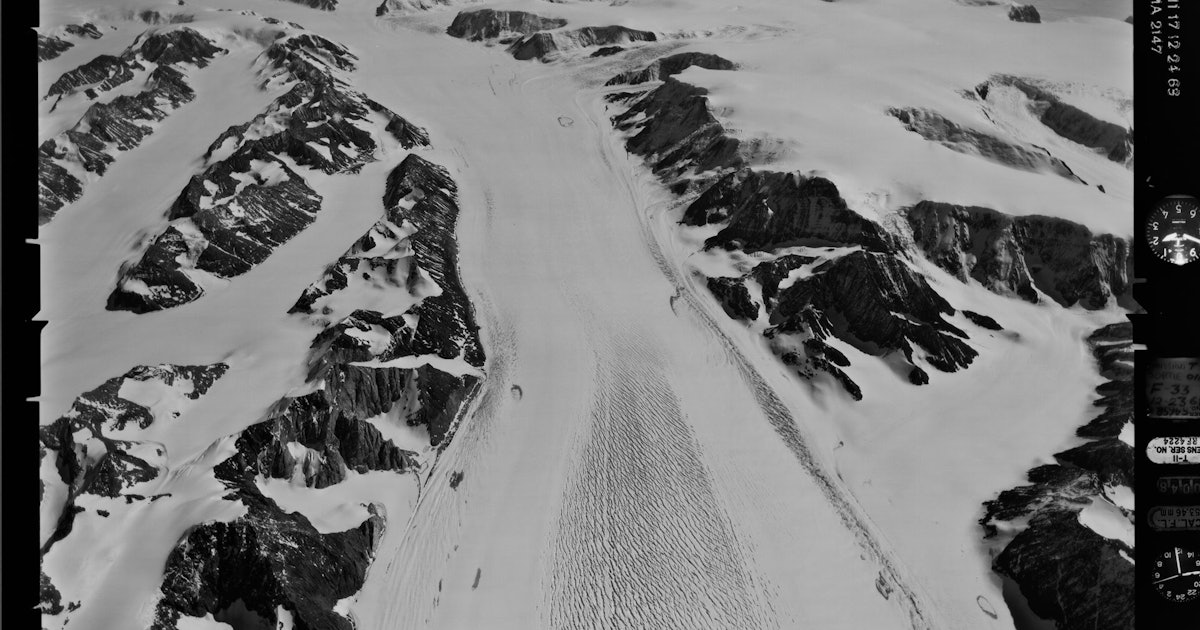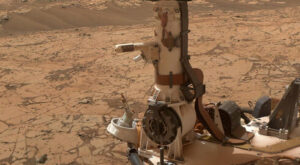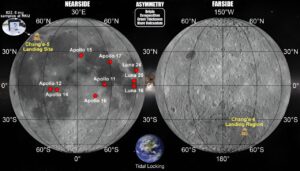In March 2002, the Larsen B ice shelf collapsed catastrophically, smashing an area about one-sixth the size of Tasmania.
In a paper published today in Scientific Reports, we used nearly 1,000 film photographs of Antarctica from the 1960s to reconstruct exactly what the five glaciers looked like decades before the Larsen B Ice Shelf collapsed. This allowed us to accurately calculate their contribution to sea level rise.
Although Antarctica is far away and the changing conditions there may seem distant, the changes can have a profound effect on all of us. The removal of the ice shelf could lead to the rapid melting of ocean glaciers and global sea level rise.
After consecutive years of unusually high temperatures, the Larsen B ice shelf collapsed within a week. This caused a dramatic change in the glaciers that flowed into it. The glaciers have been closely monitored since then – but there were few sightings of them before 2002.
However, an archive of more than 300,000 historical images contains an invaluable record of the area since 1968 and has helped us measure the difference between then and now.
Larsen B ice shelf collapse from space, March 17, 2002.
NASA
Observation of glaciers
Ice shelves are thick floating bodies of ice attached to the Antarctic coastline. Melting ice shelves do not directly cause sea level rise.
However, ice shelves “hold back” the flow of glaciers. Once the shelves are removed, the glaciers quickly melt into the ocean. This transfers ice from land to the ocean and causes sea levels to rise.
To accurately predict how Antarctica’s glaciers will respond to future climate change, it is critical to understand how they have responded in the past. But some places in Antarctica are so remote that it’s almost prohibitively difficult and expensive to get there and collect data.
Scientists often look to satellites for data collection because it is relatively cheap and easy. However, persistent cloud cover over the Antarctic Peninsula can prevent satellite observations for most of the year.
This means that for many areas in Antarctica, sightings are rare and often short-lived.
Historical photographs are an invaluable record
Between 1946 and 2000, United States Navy mappers flew over nearly every corner of Antarctica, recording 330,000 high-quality large-format film photographs in an effort to map the continent.
Photo scans are archived by the Polar Geospatial Center, University of Minnesota and are available for free download. These images are as high resolution as many modern satellites can capture.
We created accurate and real-world scale 3D models of five glaciers in the Larsen B region using a technique called photogrammetry. Traditional photogrammetry uses two overlapping photographs from different angles to create a 3D surface – just as our two eyes can visualize objects in three dimensions.
Advances in computers now allow hundreds of overlapping photos to be combined with relative ease. Coinciding points in overlapping photos are detected automatically and their 3D position is calculated geometrically. An accurate glacier surface can then be made from a cloud of millions of matching points.
Identifiable features in the images with known coordinates, such as nearby mountain peaks or uniquely shaped rocks, can then be given a GPS point to scale the model.
A virtual “flyover” of the Crane Glacier in 1968, which was affected by the 2002 collapse.
Then and now
After comparing five glaciers in 1968 and 2001 (the latter just months before the collapse), we found that they were relatively unchanged.
Since the collapse, the glaciers have lost 35 billion tons of ground ice. A single large glacier lost 28 billion tonnes, equivalent to about 0.1 mm of global sea level rise.
That doesn’t sound like much, but it’s the result of one glacier from one event. Put another way, this is equivalent to every single person on Earth pouring a one-liter bottle of water every day for ten years.
These images were essential for high-resolution monitoring of the glaciers decades before they were affected by the ice shelf collapse.
A new record for Antarctica
As climate change accelerates, warming of the atmosphere and ocean threatens the remaining ice shelves of the Antarctic Peninsula. The historical image archive will become increasingly important for expanding the record of change and establishing how significant things are.
The same images can be used to study other ice shelves or glaciers, changes in coastlines, penguin colonies, expanding vegetation or even direct human impact.
The historical image archive is an invaluable resource waiting to be tapped.
This article was originally published on The conversation from Ryan North at University of Wollongong and Tim Burrows at UNSW Sydney. Read on original article here.



